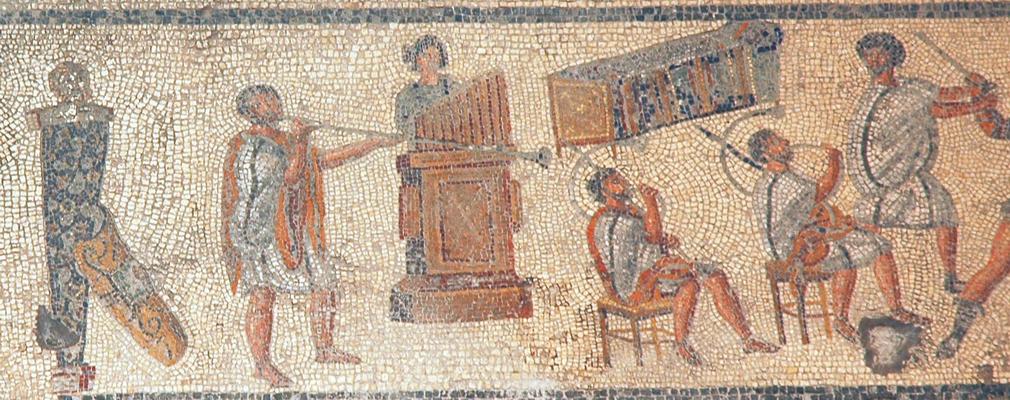The organ was a prestigious instrument in the Byzantine Empire. New reproductions help to uncover ancient music.
In 757 the Roman emperor, Konstantin Kopronymos sent a small organ to Pippin, King of the Franks and in the year 826 another organ was installed in Aachen “after the art of the Greeks”. Such organs are only known from written sources and illustrations in manuscripts. These organs were prestigious instruments in the Byzantine Empire used in connection with processions and public rituals.
In March 2012 a copy of an early Byzantine double-organ was completed at the Römisch-Germanischen Zentralmuseums in Mainz. The organ was built according to information from texts and illustrations. It contains 34 pipes distributed on 26 pipes covering a duodecim and a companion organ med 8 pipes covering a septime.
Part of this reconstruction was based on renewed reflection upon the keyboard and the tonal sequences as well as the use of original metal alloys. One of the challenges here was that these did not perform to expectations, nor was it known exactly which tools had been used
Another organ, which has been reconstructed, is based on the remains of a Roman organ found in Aquincum near Budapest. This organ had been installed in the meeting place of the local firefighters. In connection with a fire the pipes of the organ was preserved. This organ had 52 pipes. The tone sequence has been highly debated. The reconstruction presents a chromatic solution with 12 half-tones inside an octave. This solution is corroborated by written sources from the antiquity.
Another copy of this organ is currently exhibited in Aachen in connection with the Charlemagne Exhibition
In connection with the reconstruction of the organs a recording of Roman and Early Medieval Music was done in collaboration with the ensemble, Musica Romana. This is unfortunately not for sale.
The reconstructions were made at Alexander Schuke Potsdam-Orgelbau GmbH under consultation by Susanne Rühling und Michael Zierenberg. at the Römisch-Germanischen Zentralmuseums, Mainz.
SOURCE:
